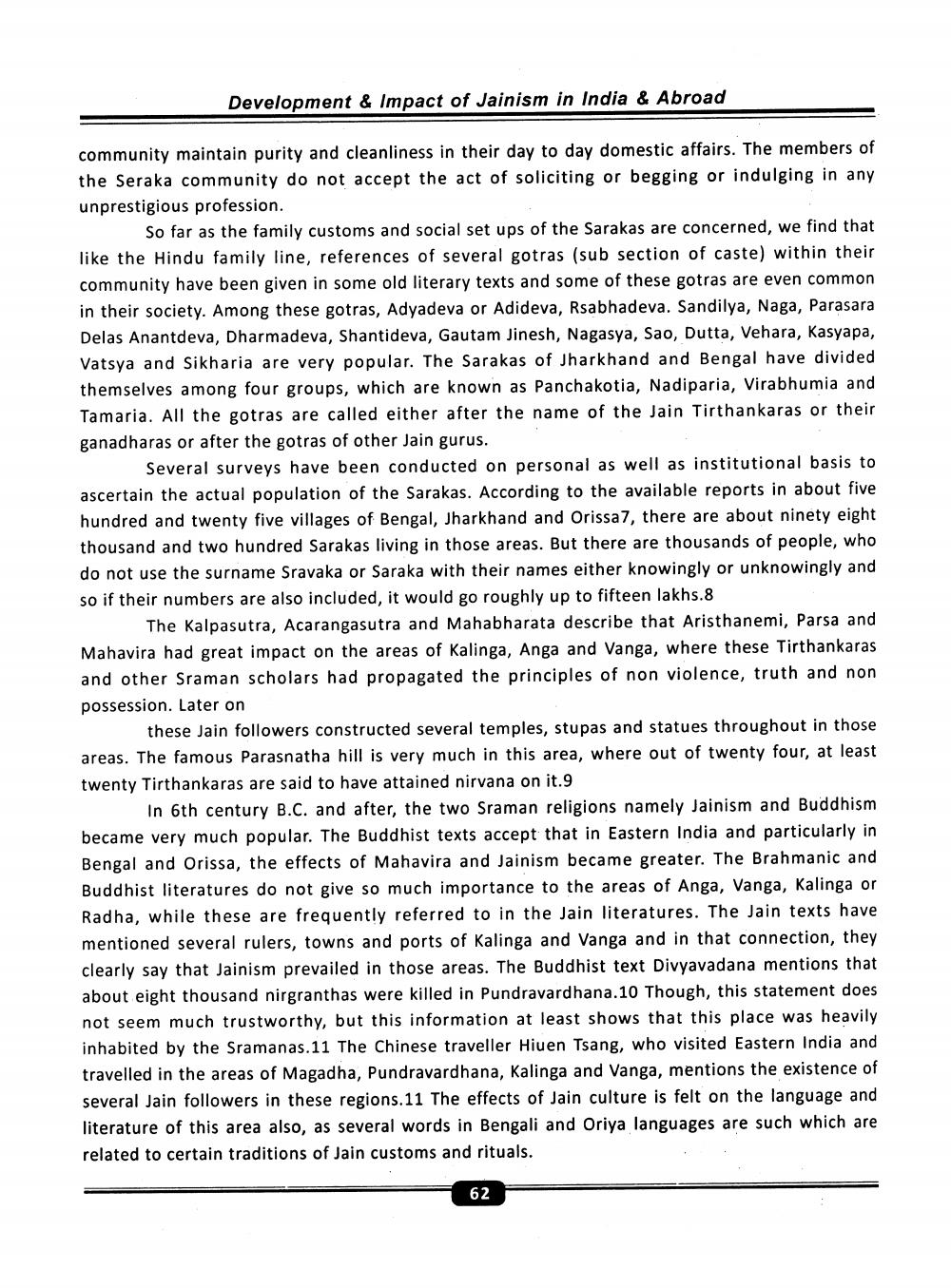________________
Development & Impact of Jainism in India & Abroad
community maintain purity and cleanliness in their day to day domestic affairs. The members of the Seraka community do not accept the act of soliciting or begging or indulging in any unprestigious profession.
So far as the family customs and social set ups of the Sarakas are concerned, we find that like the Hindu family line, references of several gotras (sub section of caste) within their community have been given in some old literary texts and some of these gotras are even common in their society. Among these gotras, Adyadeva or Adideva, Rsabhadeva. Sandilya, Naga, Parasara Delas Anantdeva, Dharmadeva, Shantideva, Gautam Jinesh, Nagasya, Sao, Dutta, Vehara, Kasyapa, Vatsya and Sikharia are very popular. The Sarakas of Jharkhand and Bengal have divided themselves among four groups, which are known as Panchakotia, Nadiparia, Virabhumia and Tamaria. All the gotras are called either after the name of the Jain Tirthankaras or their ganadharas or after the gotras of other Jain gurus.
Several surveys have been conducted on personal as well as institutional basis to ascertain the actual population of the Sarakas. According to the available reports in about five hundred and twenty five villages of Bengal, Jharkhand and Orissa7, there are about ninety eight thousand and two hundred Sarakas living in those areas. But there are thousands of people, who do not use the surname Sravaka or Saraka with their names either knowingly or unknowingly and so if their numbers are also included, it would go roughly up to fifteen lakhs.8
The Kalpasutra, Acarangasutra and Mahabharata describe that Aristhanemi, Parsa and Mahavira had great impact on the areas of Kalinga, Anga and Vanga, where these Tirthankaras and other Sraman scholars had propagated the principles of non violence, truth and non possession. Later on
these Jain followers constructed several temples, stupas and statues throughout in those areas. The famous Parasnatha hill is very much in this area, where out of twenty four, at least twenty Tirthankaras are said to have attained nirvana on it.9
In 6th century B.C. and after, the two Sraman religions namely Jainism and Buddhism became very much popular. The Buddhist texts accept that in Eastern India and particularly in Bengal and Orissa, the effects of Mahavira and Jainism became greater. The Brahmanic and Buddhist literatures do not give so much importance to the areas of Anga, Vanga, Kalinga or Radha, while these are frequently referred to in the Jain literatures. The Jain texts have mentioned several rulers, towns and ports of Kalinga and Vanga and in that connection, they clearly say that Jainism prevailed in those areas. The Buddhist text Divyavadana mentions that about eight thousand nirgranthas were killed in Pundravardhana. 10 Though, this statement does not seem much trustworthy, but this information at least shows that this place was heavily inhabited by the Sramanas.11 The Chinese traveller Hiuen Tsang, who visited Eastern India and travelled in the areas of Magadha, Pundravardhana, Kalinga and Vanga, mentions the existence of several Jain followers in these regions. 11 The effects of Jain culture is felt on the language and literature of this area also, as several words in Bengali and Oriya languages are such which are related to certain traditions of Jain customs and rituals.
62




